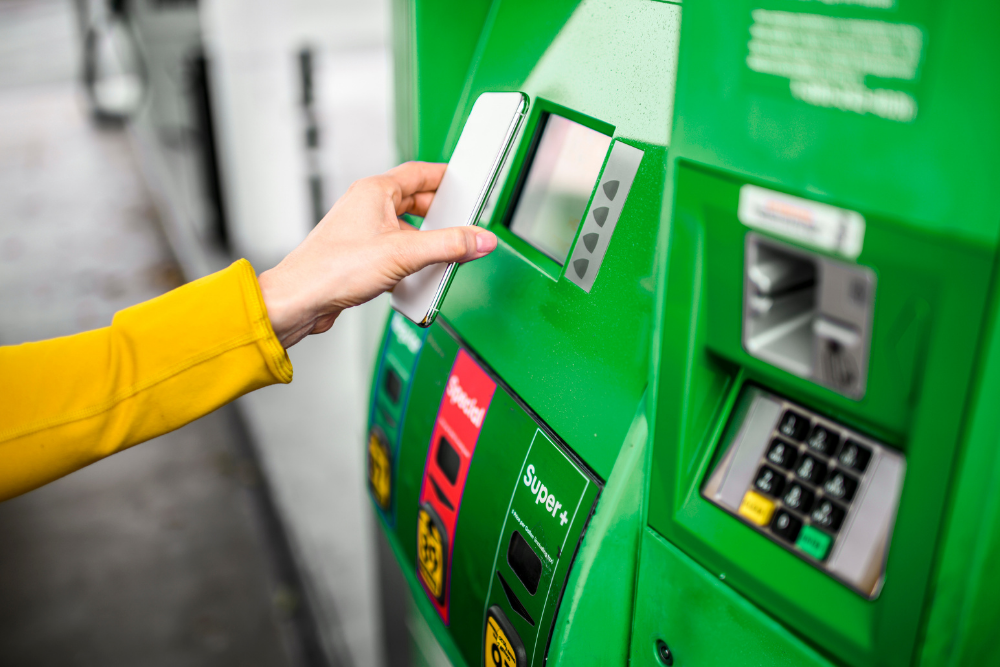2:30 pm
How COVID-19 Has Accelerated Touchless Pay at Gas Stations and Car Washes

The Covid-19 pandemic has had profound impacts on consumer behaviour. Early on, many businesses stopped accepting cash payments. Across the country, health authorities have repeatedly encouraged us to use touchless payment where possible.
For car washes, gas stations and convenience stores – the switch to touchless payment systems has been inevitable. The EMV deadline for replacing swipe systems with more secure tap technology at unstaffed points of payment is set for October 2022. The pandemic has simply provided owners with an incentive to commit sooner than they may have originally planned.
“Crisis situations compress timelines and Canadians are quickly seeking out secure and convenient digital payment options adhering to physical distancing recommendations,” said William Keliehor, Chief Commercial Officer, Interac Corp.
“COVID-19 is accelerating a new era in payments driven by the changing needs of Canadians and Canadian businesses, and for many, these convenient ways to pay will have a stickiness factor that will influence a long-term shift in behaviour.”
Canadians quick to embrace tap
Even before the pandemic, Doug Meyer of Exacta has observed that Canadian consumers have been particularly quick to accept no-touch payment. Based in Calgary, Exacta manufactures electronic payment and control systems for the North American car wash industry and has been extremely busy due to the increased demand for touchless pay systems.
“In Canada, people carry less cash these days… something you don’t see as much south of the border,” Meyer said.
Meyer credited companies like Tim Horton’s for being quick to adopt tap technology in-store, which has helped shape consumer behaviour. Today, he said 7-11 and Husky have been leaders in the move to cashless sites.
“Covid-19 has accelerated touchless, as credit and debit cards move from swipe to tap and pin. It is here to stay.”
App-based Payments
Meyer called app-based payment systems, “the future of touchless payment.” It is a future that is well underway – driven by younger, tech-savvy customers.
National fuel retailers have had touchless EMV Tap pay systems for some time (such as Shell’s EasyPay™ system or Esso’s Speedpass+™). Using a smartphone app, customers can pay using their choice of debit or credit cards, Apple Pay, and Google Pay. These systems also allow customers to collect points through associated rewards programs.
As an added bonus, many apps use geofencing technology: which can be used to push ads to customers when they are in the area, and remind them it’s time for a carwash. Apps can also be used to inform customers of special offers or promotions (such as food promotions or wash packages).
Where else touchless payments are popping up
Tap and app-based payment systems are not only finding their way to car wash tunnels and self-serve washes. Increasingly, they are being deployed on vacuums and air compressors. With people carrying less money during Covid, this has proven to be a valuable option for customers and retailers alike.
Even gift cards are now becoming chip-enabled. Not only can loved ones provide a thoughtful gift, but one that offers the additional safety of no-touch payment during the pandemic.
As charging stations for electric vehicles begin rolling out across the country, expect app and tap-based payment to be the natural choice for these tech-driven consumers.
Three considerations before choosing a payment system
Between Covid-19 and the pending EMV deadline to adopt tap payment systems by October 2022, retailers are having to make decisions in a hurry. Do a little bit of homework to ensure you choose a system that will meet your needs as they evolve.
Meyers had the following advice to share with retailers seeking to upgrade to a touchless payment system:
- Make sure any payment system is fully integrated with your cash register system
- Verify that the system will work with any rewards program you offer
- To help offset the upfront cost, be aware that there are government loans for businesses that are upgrading their sites to touchless technology
